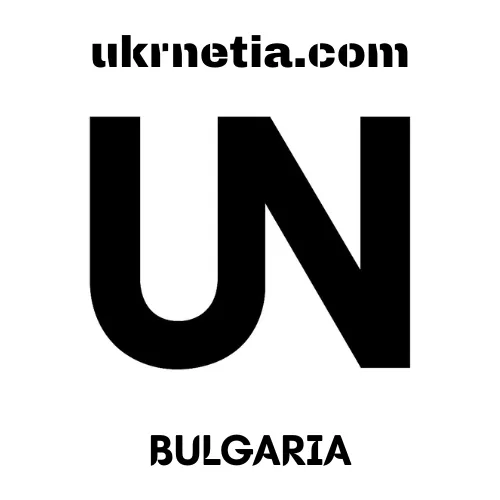
Does an alphabet influence a country’s economic prosperity? At first glance, this question may seem absurd. However, when analyzing the economic indicators of European countries through the lens of their writing systems, an interesting correlation emerges: countries using Cyrillic script demonstrate lower living standards compared to their Latin-script neighbors. Of course, the alphabet itself does not determine economic success, but it may serve as a marker of deeper historical, cultural, and geopolitical factors that genuinely shape economic reality.
Exclusion from Analysis: The Special Case of Russia
Before proceeding to detailed comparisons, it is necessary to justify Russia’s exclusion from this study. Russia represents a unique case for several reasons. First, it is not entirely a European country—only about 23% of its territory is located in Europe, while the rest extends across Asia. This geographical peculiarity makes it atypical for the European context.
Second, and more importantly, Russia possesses enormous reserves of natural resources, particularly oil and gas, which fundamentally alter its economic model. According to BP Statistical Review data, Russia holds the world’s largest natural gas reserves and the sixth-largest oil reserves. These resources provide a significant portion of state revenues and allow for maintaining a certain level of economic stability regardless of other factors.
Thus, including Russia in the comparison of Cyrillic-script countries would distort the picture, as its economic indicators are largely determined not by structural or cultural factors but by the presence of extraordinarily rich natural resources. For the purity of this study, we will focus on countries whose economies are based on more typical European development models.
Cyrillic in Modern Europe
In contemporary Europe, Cyrillic script is officially used by the following countries:
In the European Union:
- Bulgaria (the only EU country with Cyrillic)
Post-Soviet countries:
- Ukraine
- Belarus
Balkan countries:
- Serbia (officially uses both alphabets, but constitutionally Cyrillic has priority)
- North Macedonia
- Montenegro (uses both alphabets)
- Bosnia and Herzegovina (in Republika Srpska)
Interestingly, Cyrillic was created in Bulgaria in the 9th century and has since become a symbol of Orthodox civilization. However, today the geography of its use has significantly narrowed.
Economic Indicators: Numbers That Speak for Themselves
EU Countries with Latin Script versus Bulgaria
Let’s examine GDP per capita economic indicators (2024 data):
Wealthiest EU countries (Latin script):
- Luxembourg: €141,000 (241% of EU average)
- Ireland: €111,000 (211% of EU average)
- Netherlands: €63,000 (163% of EU average)
- Denmark: €68,000-90,000
- Germany: approximately €50,000
Bulgaria (Cyrillic):
- €16,000-17,000 (66% of EU average)
Bulgaria is the poorest country in the European Union by GDP per capita. The difference is striking: Luxembourgers earn approximately 8-9 times more than Bulgarians, and even the average EU country has nearly twice the indicator.
Comparison of Post-Soviet Countries
Even more revealing is the comparison between post-Soviet countries that chose different alphabets:
Countries with Latin script:
- Poland: $25,023 (2024)
- Czech Republic: $31,707 (2024)
- Croatia: $23,931 (2024)
- Estonia: approximately €28,000
- Latvia: approximately €22,000-24,000
- Lithuania: approximately €26,000
Countries with Cyrillic:
- Belarus: $8,317 (2024)
- Ukraine: $5,390 (2024, pre-war figures were higher)
- Serbia: $8,576 (2024) or $12,514 at nominal exchange rate
- Montenegro: approximately €11,000 (2023), 54% of EU average
- North Macedonia: $6,700-9,100 (2024)
The difference is dramatic. Poland has a GDP per capita three times higher than Belarus, and the Czech Republic earns nearly four times more than Serbia. Even the poorest Baltic country—Latvia—has economic indicators 2-3 times better than the wealthiest “Cyrillic” country from the post-Soviet space (excluding Russia).
Historical Roots of the Economic Divide
Religious Division and Its Consequences
The geography of Cyrillic use in Europe almost perfectly coincides with the historical distribution of Orthodox Christianity. The Great Schism of 1054 between the Western (Roman Catholic) and Eastern (Orthodox) Churches was not merely a religious event—it laid the foundations for a profound cultural and economic division.
Western Europe, where Latin script dominated, became the cradle of the Renaissance, Reformation, Enlightenment, and Industrial Revolution. These processes formed the foundations of modern market economy, democratic institutions, and the rule of law. Eastern Europe, conversely, remained for a long time under the influence of Byzantium, and later—the Ottoman Empire and Russian Empire, where capitalism developed much more slowly.
Ottoman Rule in the Balkans
Balkan countries using Cyrillic (Serbia, Montenegro, North Macedonia, Bulgaria) spent hundreds of years under Ottoman rule. This left a deep mark on their economic development. The Ottoman millet system, while allowing some cultural autonomy, hindered the development of modern economic institutions. When these countries gained independence in the 19th century, they lagged significantly behind Western Europe in terms of industrialization and capitalist relations development.
Soviet Legacy
The most destructive impact on the economies of Cyrillic-script countries came from the Soviet period. Ukraine, Belarus, as well as indirect USSR interference in the affairs of Bulgaria, Yugoslavia, and other socialist countries led to the creation of a command-administrative economy that proved inefficient and unsustainable.
After the USSR’s collapse in 1991, all these countries faced the necessity of painful transformation. Poland, the Czech Republic, and the Baltic countries more quickly and successfully implemented market reforms, integrated into the EU and NATO. Cyrillic-script countries (except Bulgaria, which joined the EU in 2007) remained in a “gray zone,” often maintaining close ties with Russia and reproducing elements of authoritarian governance.
Contemporary Structural Problems
Corruption and Weak Institutions
According to Transparency International’s Corruption Perceptions Index, Cyrillic-script countries systematically demonstrate worse indicators:
- Bulgaria has an index of 43—one of the lowest in the EU
- Ukraine and Belarus have even lower indicators
- Serbia and North Macedonia also struggle with high corruption levels
Corruption is not just a moral problem—it is a massive obstacle to economic development. Corruption raises the costs of doing business, deters foreign investors, distorts competition, and leads to inefficient resource allocation.
Investment Climate
Foreign investment is critically important for economic development. However, Cyrillic-script countries traditionally receive significantly less foreign direct investment compared to their Latin-script neighbors. Reasons include:
- Political instability
- Legal system unpredictability
- Bureaucratic obstacles
- Distrust in the judicial system
- Geopolitical risks
Demographic Crisis
Nearly all Cyrillic-script countries face a serious demographic crisis. Bulgaria is losing population at the fastest rate in the world. Ukraine also had negative natural population growth before the war, and the war has only worsened the situation. Serbia, Montenegro—all these countries face youth emigration, population aging, and low birth rates.
Young, educated people often leave for Western European countries in search of better opportunities. This creates a “brain drain” and undermines long-term prospects for economic growth.
Exceptional Cases and Nuances
Serbia and Montenegro: Bi-Alphabetic Countries
An interesting case is Serbia and Montenegro, where both alphabets are officially recognized. In Serbia, the constitution gives priority to Cyrillic, but in practice, Latin script is widely used, especially in business, the internet, and among youth. The Serbian government has even introduced incentives for companies using Cyrillic on signage, which testifies to the real threat of its displacement.
This may be symbolic: as these countries increasingly integrate into the European economy, Latin script naturally displaces Cyrillic. One might assume that if this trend continues, the economic indicators of these countries may improve.
Croatia: Successful Transition
Croatia represents an interesting counterexample. As part of Yugoslavia, it used both alphabets, but after independence, it definitively switched to Latin script. Today, Croatia is an EU member and has a significantly higher standard of living (about 77% of EU average) than its former Yugoslav neighbors who retained Cyrillic.
Is Cyrillic a Cause or Consequence?
It is important to emphasize: Cyrillic script itself is not the cause of economic backwardness. An alphabet is merely a symbol, a writing tool. The real causes of economic problems lie much deeper:
- Historical legacy: centuries of isolation from Western European modernization processes
- Geopolitical factors: belonging to the Russian/Soviet sphere of influence
- Institutional weakness: absence of strong democratic institutions and rule of law
- Cultural peculiarities: lesser inclination toward individualism and entrepreneurship
- Educational systems: less integration into the global educational system
Cyrillic is a marker of these deeper processes. Countries using Cyrillic are united not by the alphabet but by a common historical trajectory—Orthodox civilization, late modernization, authoritarian regimes, Soviet influence.
EU Integration: Hope for the Future?
Bulgaria demonstrates that EU membership can help a Cyrillic-script country improve economic indicators. Since joining the EU in 2007, Bulgaria’s economy has grown significantly, although the country still remains the poorest in the union. What matters is that Bulgaria has been able to attract European investment, modernize infrastructure, and gradually implement European standards.
Serbia, Montenegro, and North Macedonia are EU candidate countries. If they can implement necessary reforms and integrate into European structures, their economic prospects will significantly improve. However, the integration process is complex and lengthy, and success can only be measured over decades.
Ukraine has also received EU candidate status, although the war with Russia creates enormous obstacles to economic development. If Ukraine can end the war and begin large-scale reconstruction with Western support, it has a chance to become a success story—a Cyrillic-script country that achieved European living standards.
Final Thoughts and Conclusions
The economic gap between European countries with Latin and Cyrillic scripts is an undeniable fact. Latin-script countries systematically demonstrate higher GDP per capita indicators, better institutions, lower corruption, and higher quality of life.
However, Cyrillic is not a cause but a symbol of deeper historical, cultural, and geopolitical processes. Countries using Cyrillic are united by a common historical trajectory:
- Belonging to Orthodox civilization, separated from Western European modernization
- Ottoman or Russian/Soviet rule that hindered the development of capitalism and democracy
- Late industrialization and difficulties transitioning to a market economy
- Weak institutions, corruption, and authoritarian traditions
- Geopolitical dependence on Russia or conflict with it
The future of Cyrillic-script countries depends not on which alphabet they use but on whether they can implement deep structural reforms, integrate into European and transatlantic structures, build strong democratic institutions, and overcome corruption. Bulgaria demonstrates that this is possible, but the process is lengthy and complex.
Cyrillic is a beautiful alphabet with rich history and cultural heritage. But the countries using it are still struggling with the consequences of centuries of historical lag. Overcoming this gap requires much more than changing the alphabet—genuine transformation of economy, politics, and society is needed.
Statistical data as of 2024-2025 Sources: Eurostat, World Bank, IMF, Trading Economics, national statistical offices










